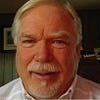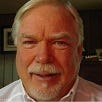Eliminating Treatment Delays at VA HospitalsEliminating Treatment Delays at VA Hospitals
Queuing, capacity management, and same-day engagement for healthcare systems.
February 2, 2016

Queuing, capacity management, and same-day engagement for healthcare systems.
In June of 2015 National Academy of Science published the findings of a research group that was assigned to evaluate the problems and solutions around the delays in appointments for patients of the Veteran's Administration. What they found was that the only way to eliminate long wait times was to embrace same-day engagement and to use techniques from the aviation and contact center industries to deliver same-day care without adding resources. Many contact centers improve capacity by 50 to 90% with the application of technology that manages supply and demand for customer support. This is the opportunity that the National Academy of Science study group seeks to exploit.
Capacity management and queuing are two familiar tools that are used to achieve effectiveness and efficiency in the contact center industry. These techniques can be applied to the healthcare business; however, they must be repositioned or interpreted to be effectively applied to healthcare processes. In any contact center the first thing to understand is demand and supply. The art of managing a contact center is focused on the elimination of mismatches of demand and supply. This is the challenge for healthcare providers.
Managing supply in a hospital is very similar to skill-based queues in a contact center. Real-time information about work that is being done within a practice or department is key to understanding healthcare supply. The concept of practices and departments is logically identical to "skills" that are assigned to contact center agents for the purposes of queuing work (patient engagement) or measuring performance. These concepts easily translate from contact center to healthcare. What does not translate well is the concept of occupancy or availability.
Historically, occupancy was the percentage of time that a contact center agent was on the phone during a given interval of time. If the agent was on the phone for 6 hours out of an 8 hour logged-in period, then their occupancy was 75%. In modern contact centers this metric includes multimedia interactions. Availability is the amount of time that the agent is not on the phone or handling multi-media interactions while he or she is logged into the contact distribution system. It is usually expressed as a percentage.
Telephone usage is a key element of contact center metric, but just a very small part of what needs to be measured in a hospital in order to understand occupancy and availability in real-time. Scheduled appointments, canceled appointments, phone usage, computer usage and use of other healthcare related machines can alter the availability of any given healthcare worker.
The good news is that all of these values can be gleaned from scheduling systems and from IP-based networks. With this real-time information patient engagement sessions can be scheduled and established during moments when healthcare workers are available. When healthcare worker appear unavailable the patient engagement sessions can be scheduled for a later time or they can be routed (usually in less than a second) to secondary or tertiary backup resources. This should sound familiar to anyone who has worked in a contact center.
Making real-time or same-day patient engagement a reality will require a change in the way that certain events are scheduled. In order for same-day service to be available the existing scheduling process for follow-up appointments needs to be restricted to a percentage of the day. In most healthcare systems this will require a shift from approximately 70% of engagements scheduled 30 days in advance, to a schedule that reserves 70% of capacity for same-day engagement. The precise percentage can be understood once the capacity metrics are in production. The transition period may last 60 to 90 days in most systems, and during this period demand for resources will be much greater than normal. Special attention to this transition period will be necessary for success.
Queuing or assigning patient engagement sessions in the healthcare setting is nearly identical to that in a contact center. In order for the overall solution to be successful, telehealth solutions will be necessary to provide more rapid triage and processing of engagement requests.
While many of these requests for engagement will be inbound from patients many will be established on an outbound basis by database applications that use data from the patient's health record, claims history and other behavioral data to predict the need for an engagement (The industry has adopted the name Population Health for the calculation of these events).
This is the same approach that modern contact centers use when a product defect or sales opportunity is apparent. These predictive analytics in combination with real-time communications will reduce admissions and readmissions through earlier management of health situations. There are more than 50 companies that provide these analytics. It will be up to the telecommunications industry to provide solutions that can be triggered with the information that these database applications reveal.
Additionally, work-flow enhancements can be accomplished by triggering automatic communications sessions that accelerate decision processes. An example of this would be the systematic establishment of communications sessions (conference calls) when a discharge order is detected in the hospital billing system or other systems.
Doctors, specialists, nurses, social services, family members, clergy, transportation, therapy, rehabilitation services, and many others need to coordinate during the discharge process. Opening a conference bridge in real-time and calling all of the people involved in this process will accelerate the decision processes and reduce the time needed to discharge a patient. This increases the healthcare system's capacity by making beds available sooner. More capacity equals faster service.
As the National Academy of Science study concludes:
I encourage all healthcare professionals to read this study. While the study group was able to articulate the benefits of using contact center technologies, they were not able to define the specific solutions or technologies. It will be up to the telecommunications and information technology professionals in these healthcare systems to define and implement the solutions. If you do read the study, then please leave feedback so that this can become a resource for all healthcare providers.
Chris Vitek has applied for patents on several techniques for measuring capacity or automating distribution of healthcare engagements.
About the Author
You May Also Like





